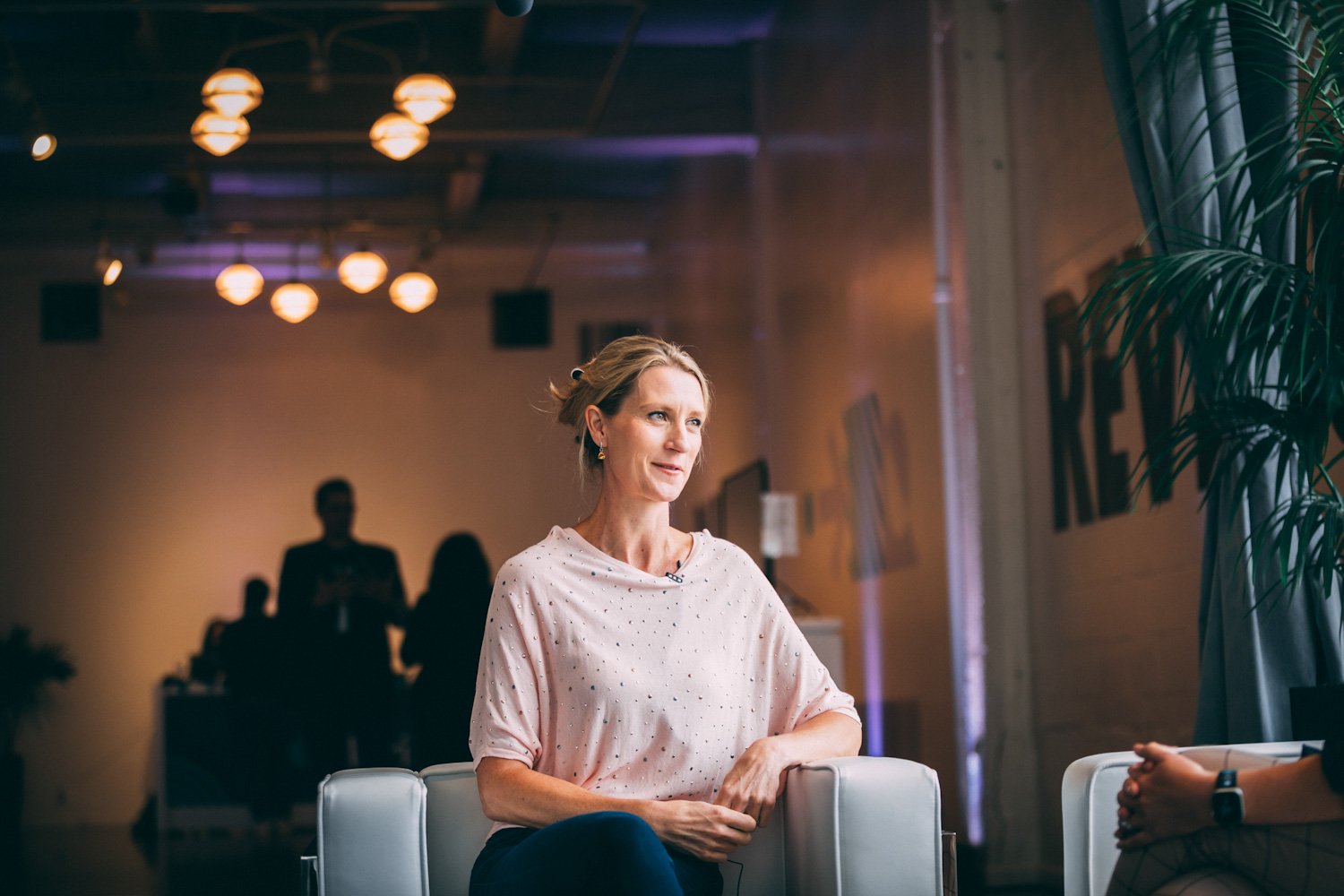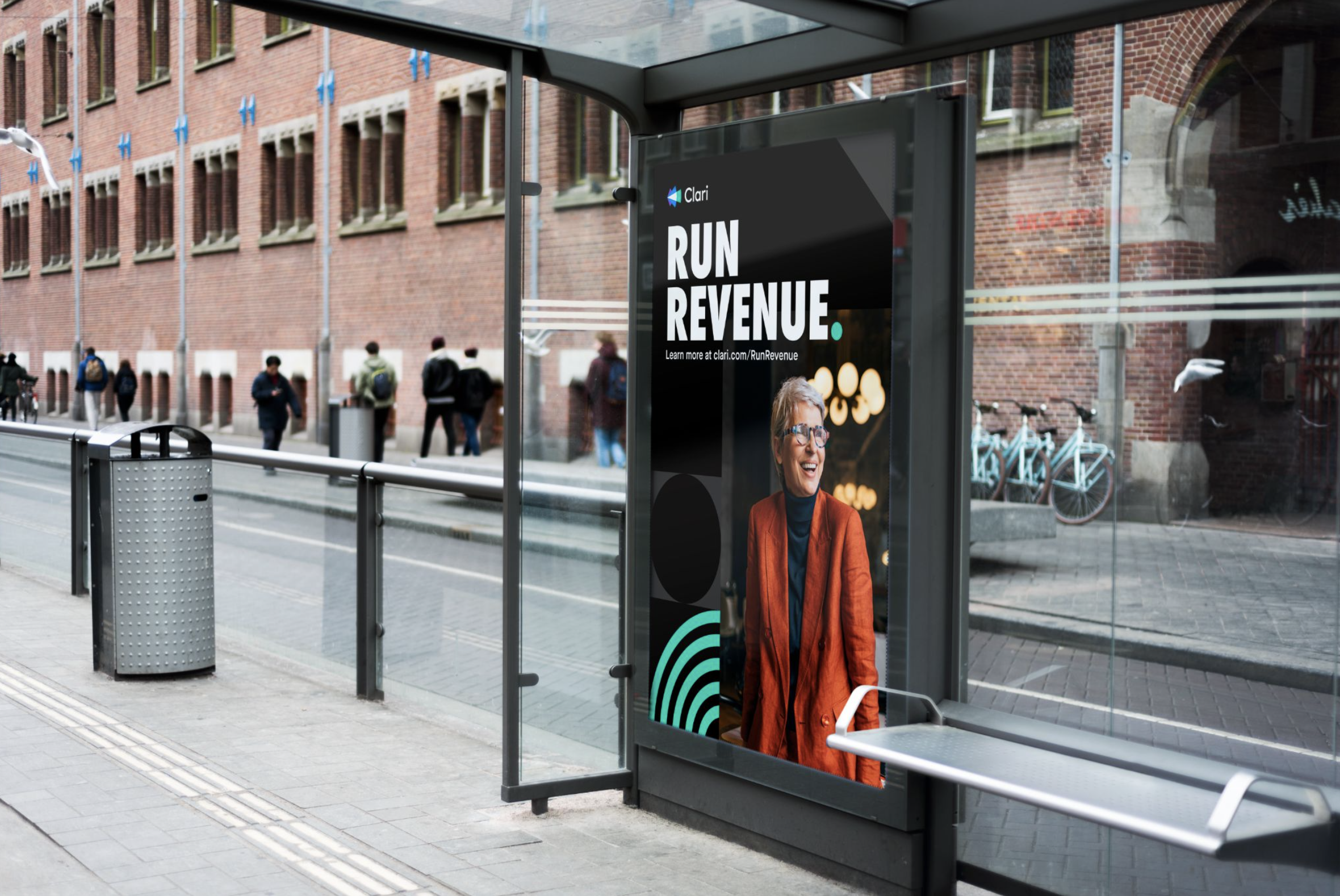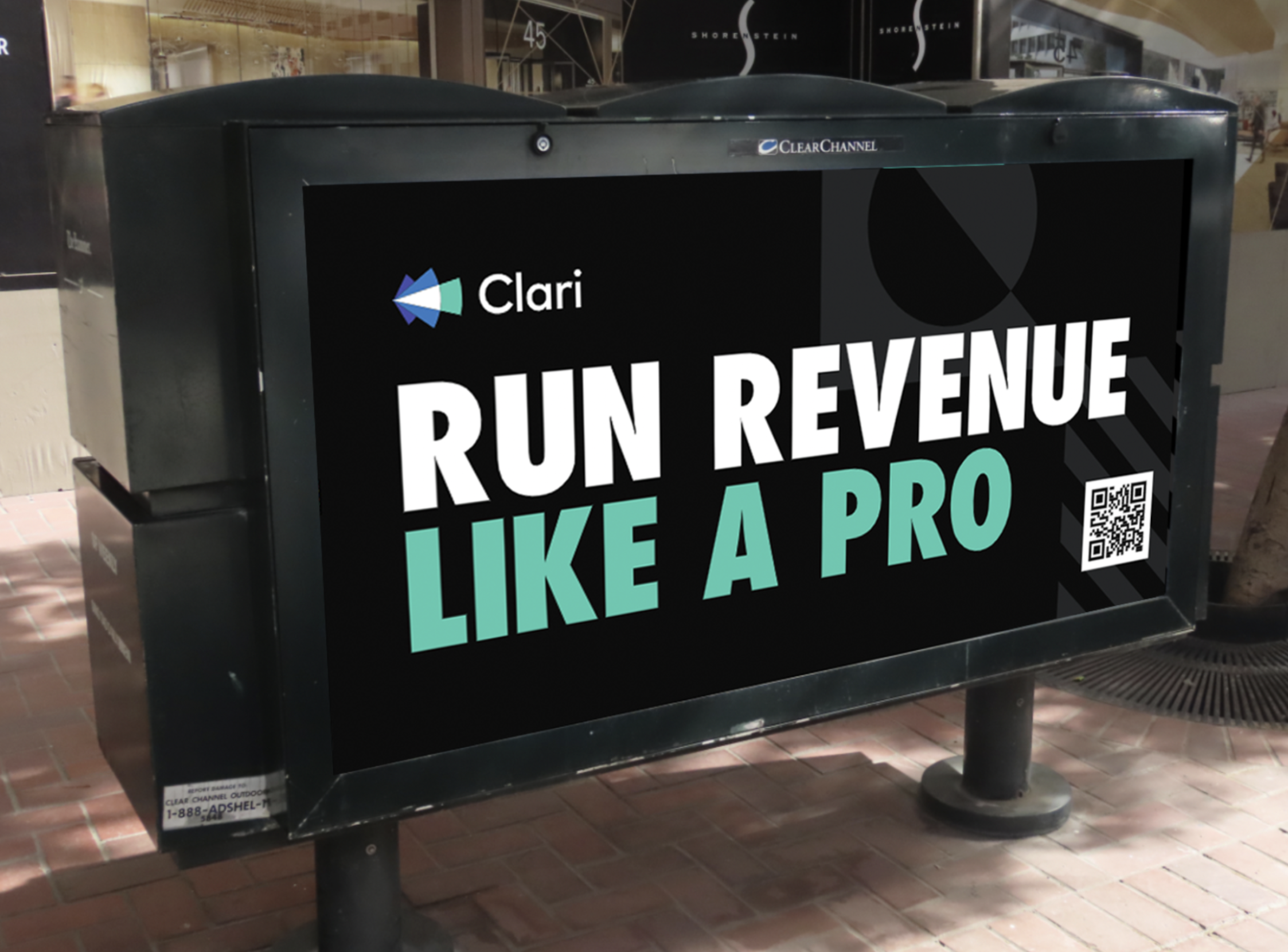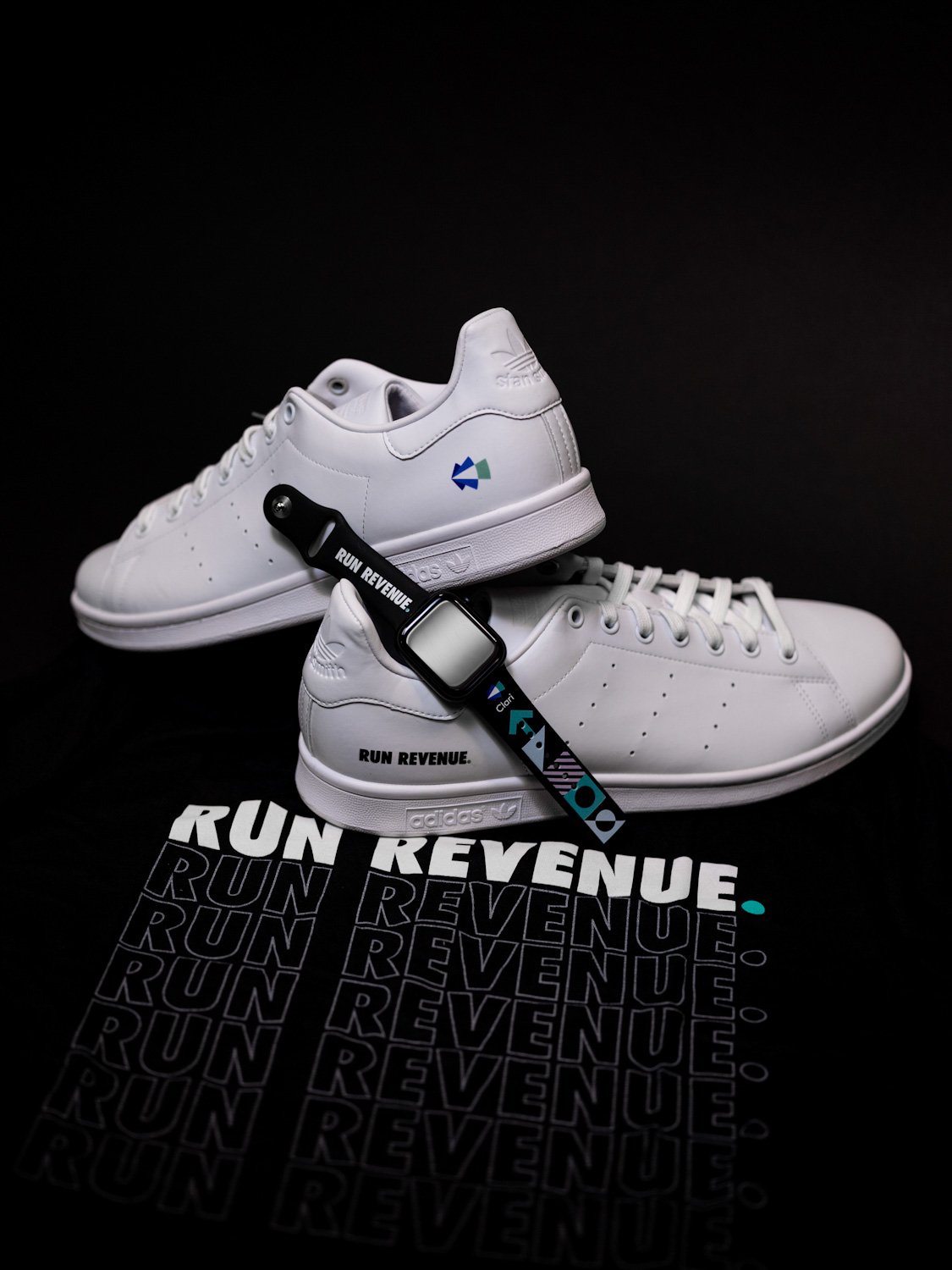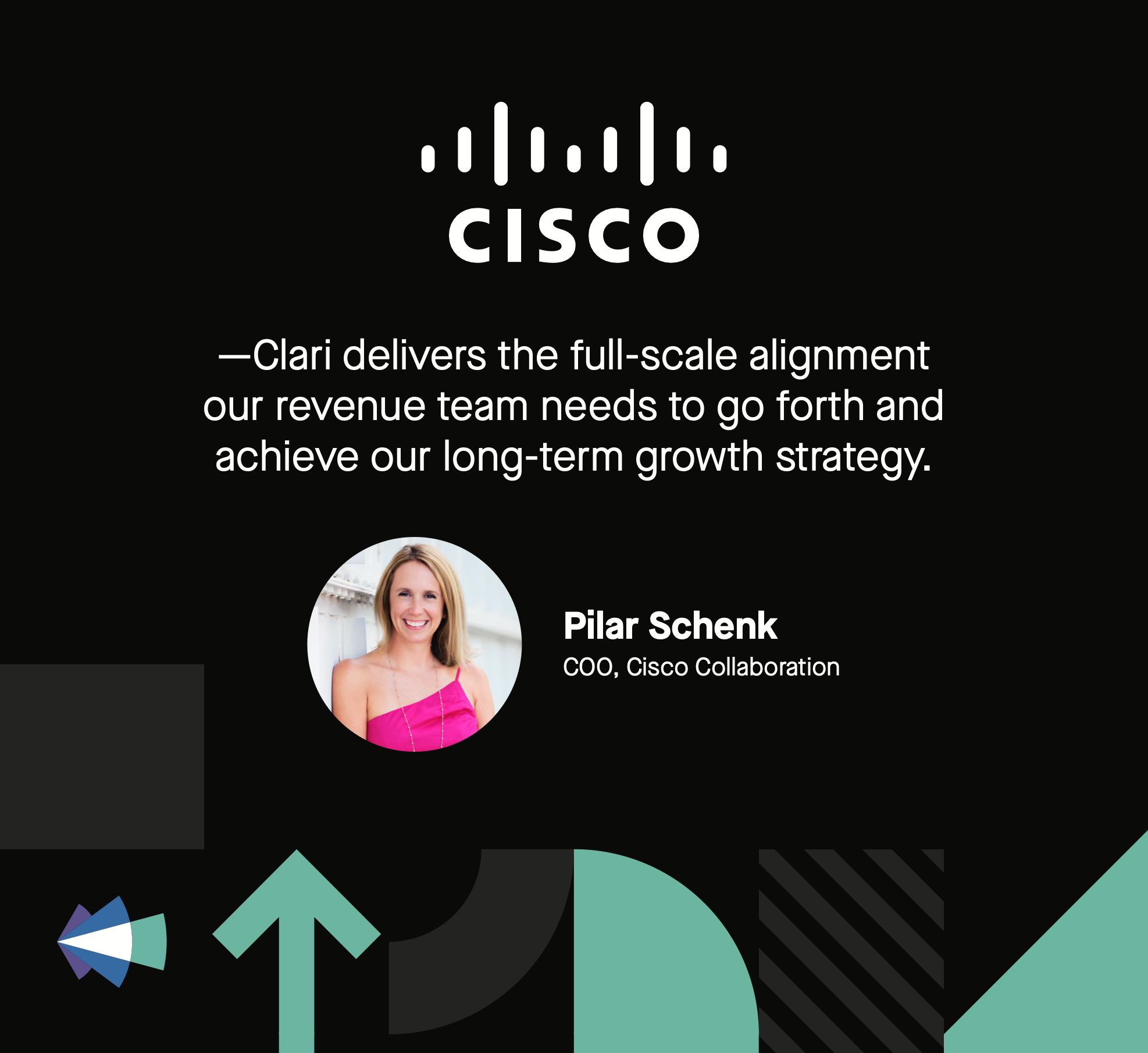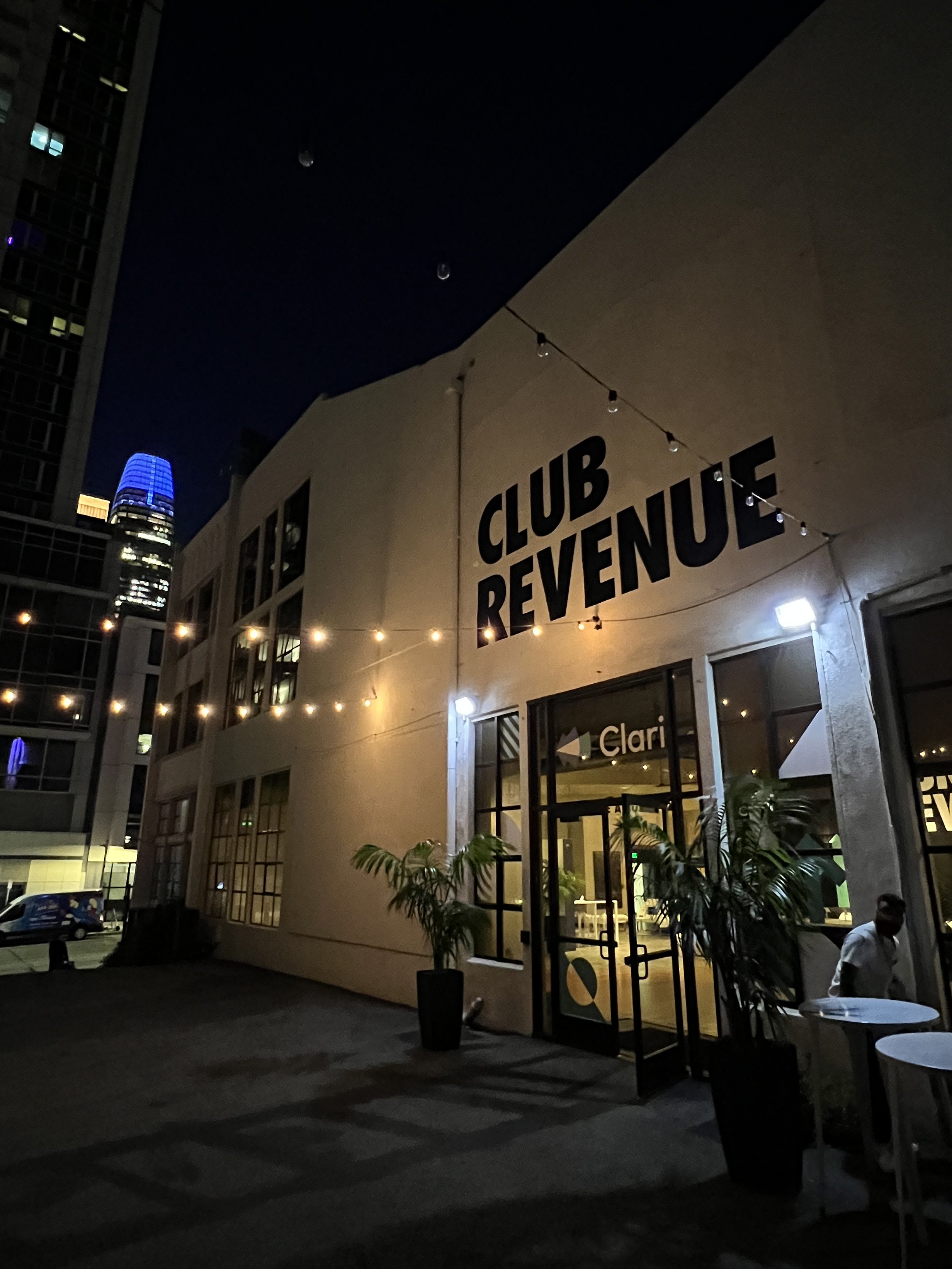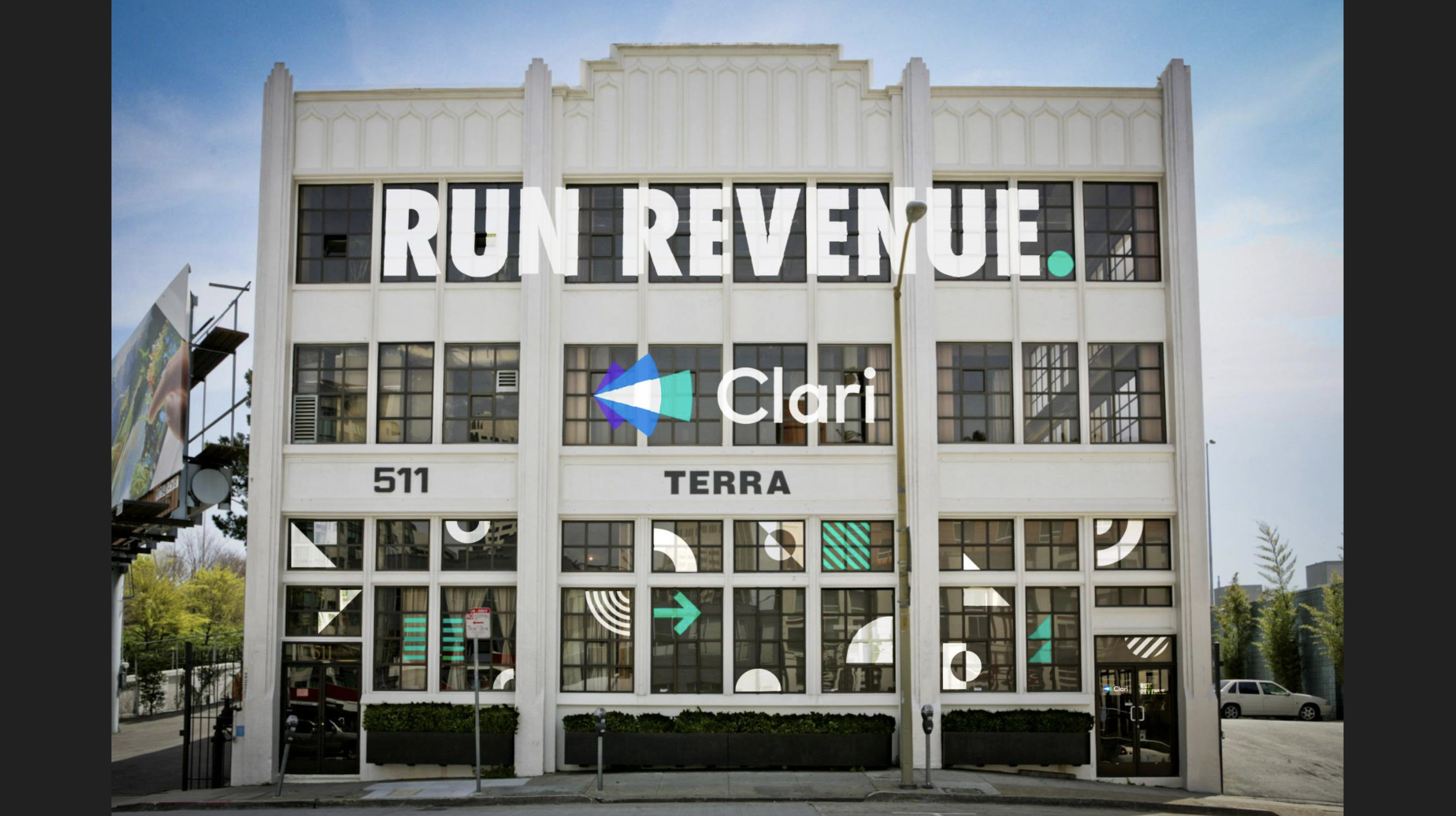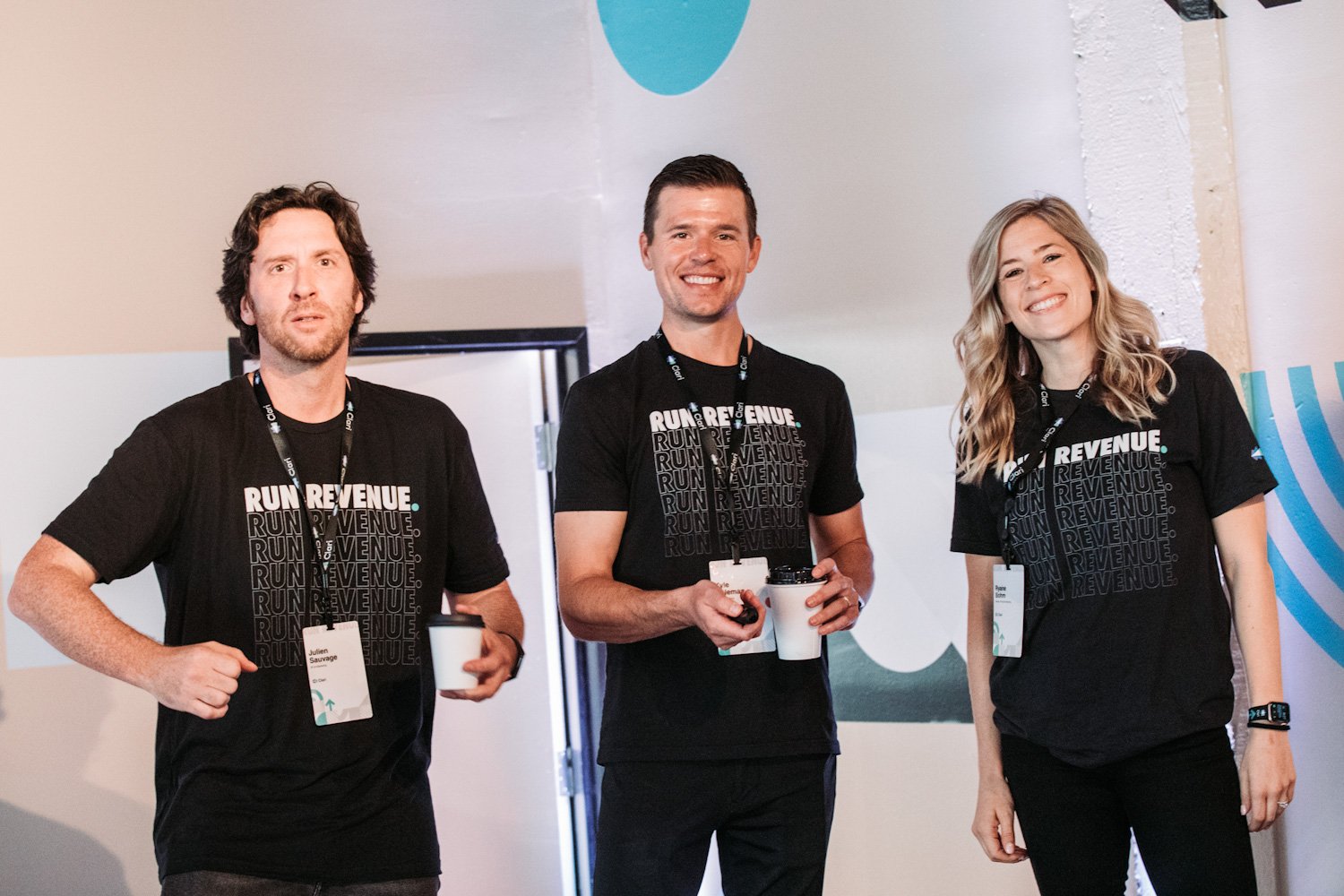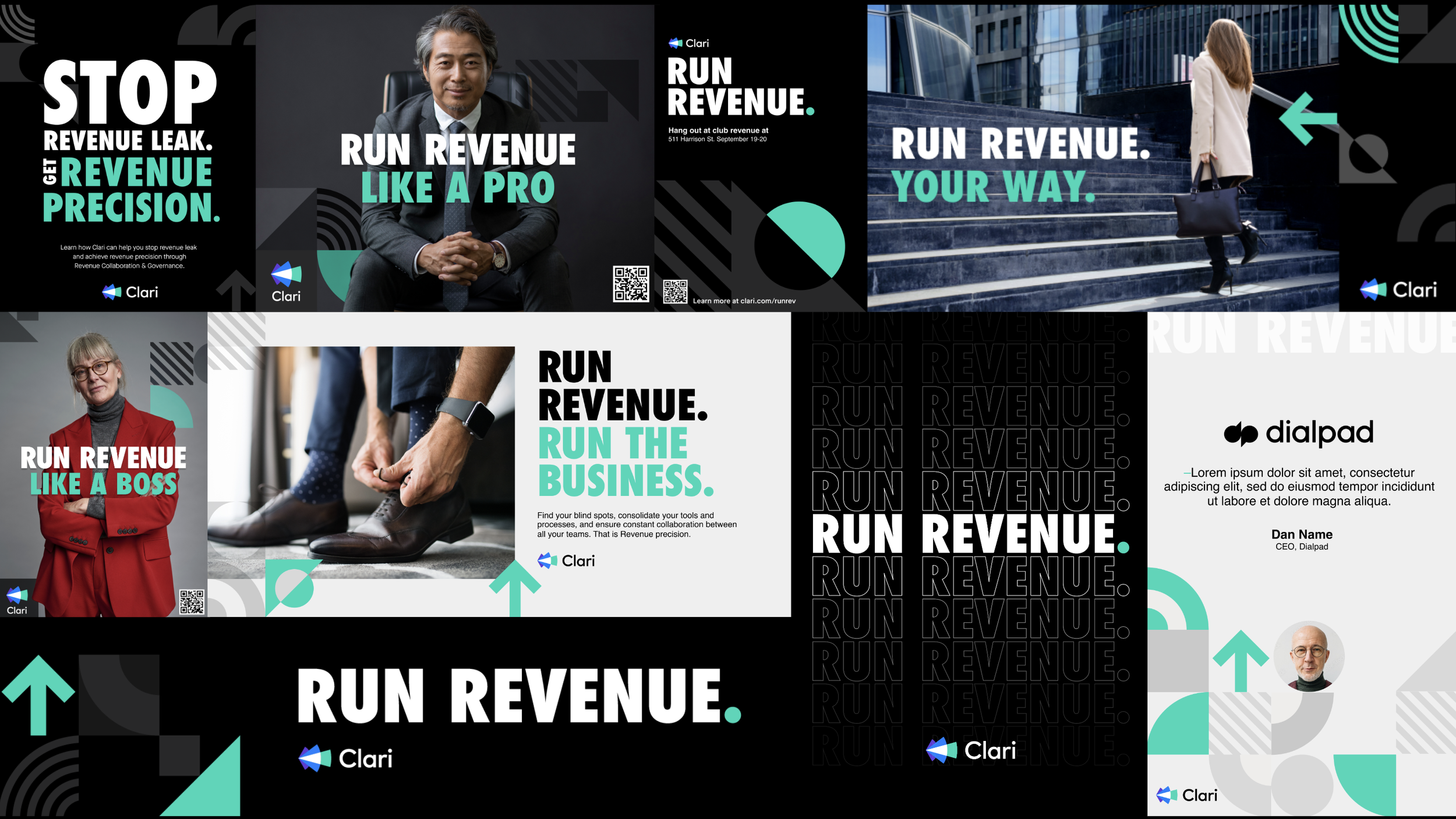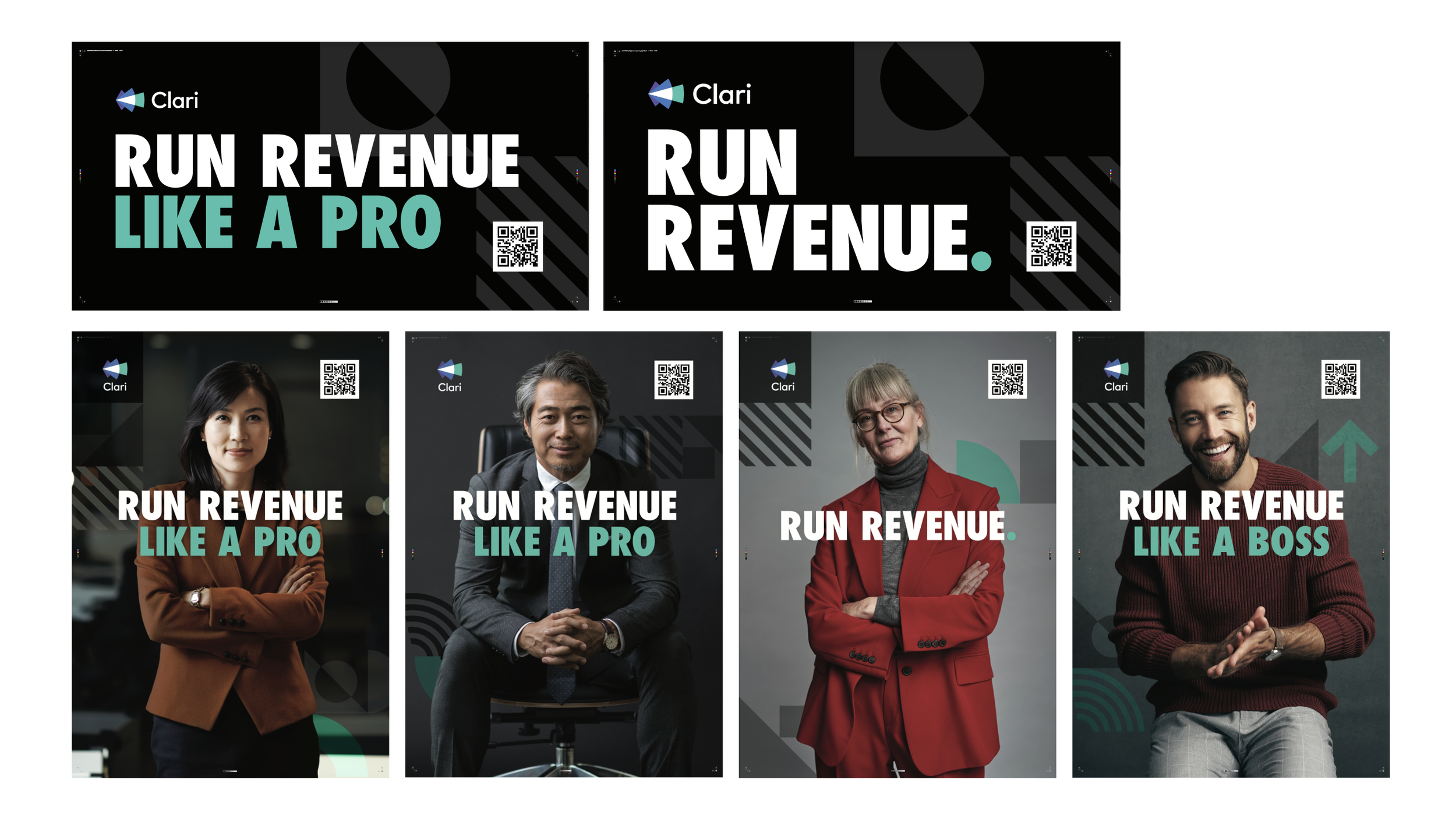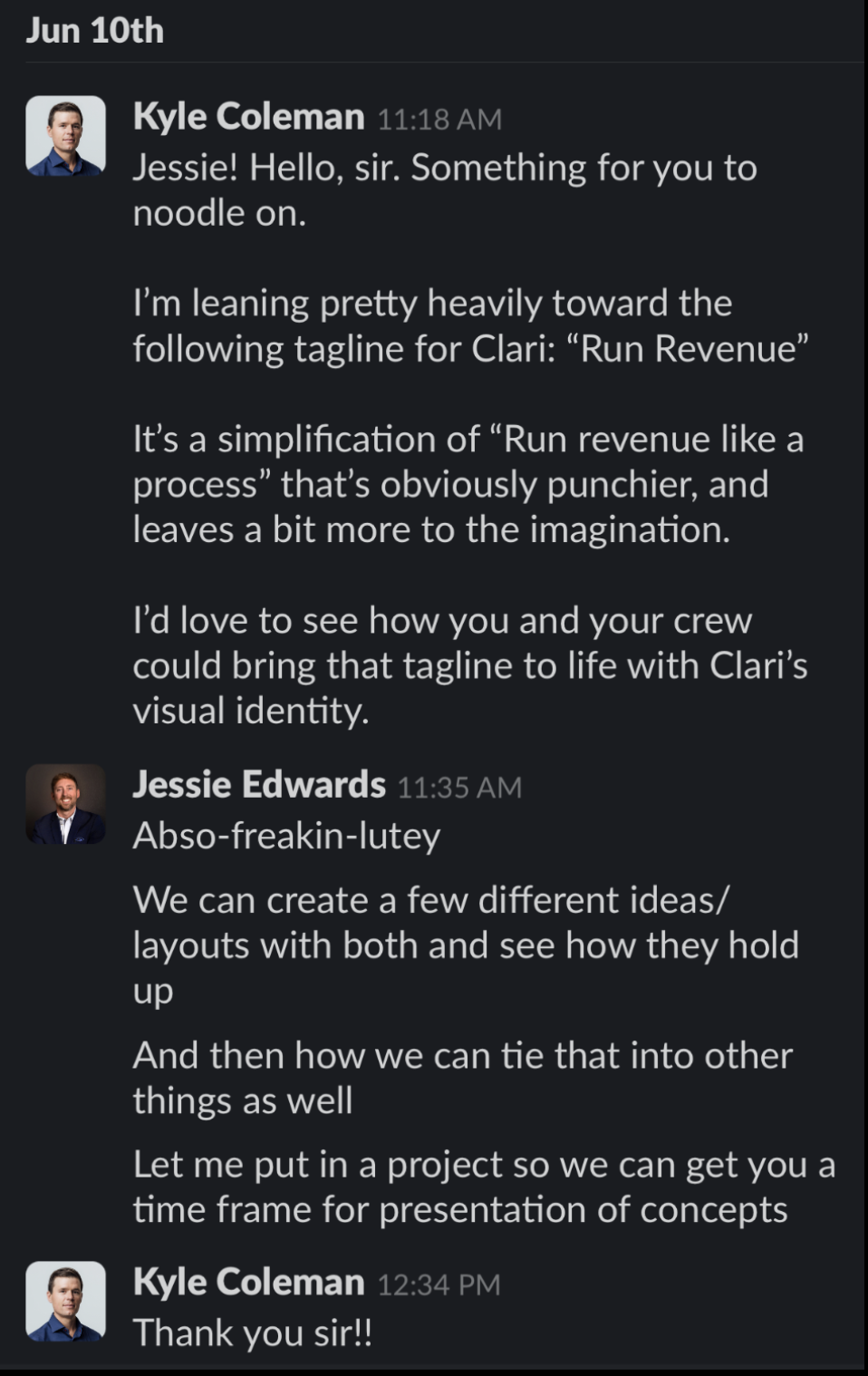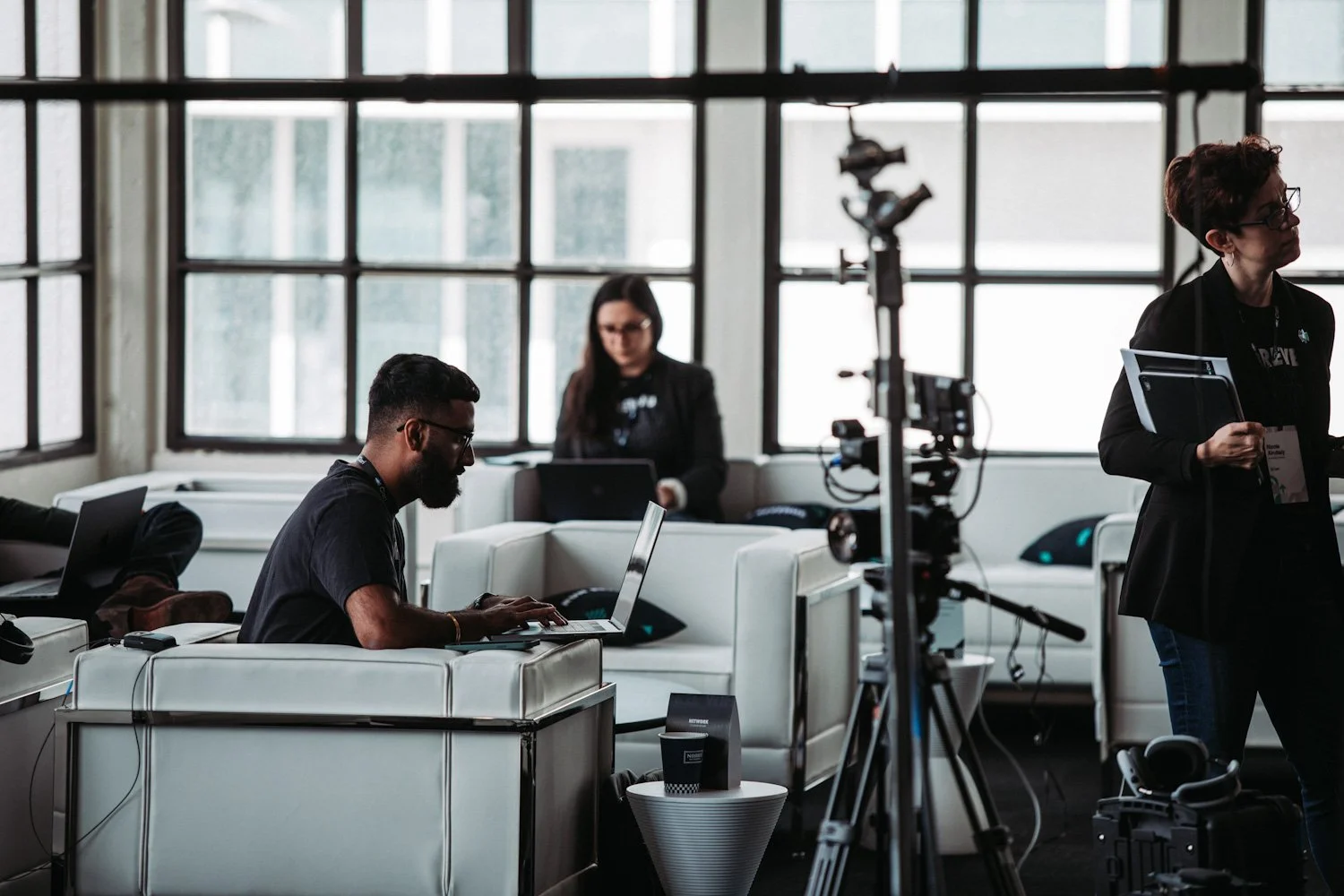Corporate Work
DREAMFORCE 2022
I don’t think I can properly tell the story of our Dreamforce event without starting with our brand update that came 3 months prior. There had been a lot of changes in the organization and Kyle Coleman had just transitioned to the head of Marketing for the organization. One thing that was really unique about him taking on this role was his background in both marketing and sales. Being a company that makes software for sales and revenue leaders kinda positioned him as a great person who knows both sides of what the business needs.
Right away he reached out to me about doing some slight updates to our visual brand… Well, why tell you here when I can show you? Here is an actual screenshot of our convo around updating our brand. This became the foundation of our visual identity used at Dreamforce in 2022. Run Revenue.
We set up a project, walked through a brief with Kyle, and brought the entire team (Jessica, Meaghan, Jessica H, Isaac, and myself) into the office for a week to have a working to better understand the goals of this refresh and our plan of attack. This was super fun and I believe we got 3 weeks’ worth of work done as well as some fantastic team-building/bonding in under 5 days. Here is the actual Figma file with the 5 explorations we pitched.
We built out 5 different directions and each person on the team pitched one to our stakeholders. Once a broad direction was selected we took a week to build it out in detail and present the final direction and get written approval. And just like that, Run Revenue was born.
Dreamforce 2022
Now I think we can get into it.
The Brief
Requestor: Kyle Coleman- EVP Marketing
Timeline: Event branding including creative exploration: 1 Month
Execution of all printed and digital deliverables: 2 Months
Goal: Make Clari look like a billion dollar company by creating an environment that was comfortable yet dramatic for attendees
Contributors: Devin Reed- Content, Bruce Layman- Content & Video, Julien Sauvage- Head of Corp & Prod Marketing, Anmol Thiara- Video Producer, Jessica Louie- Lead Designer, Meaghan Sandtorv- Designer, Jessica Hardy- Designer, Justin Fox- Project Manager, Emily Pisani- Event Lead, Prospect Events- Event Agency
Process
Now that we have the new branding in place for our core foundational elements we had a lot of new ammunition to use for our dream force event which was held at the Terra Gallery in San Francisco. Because this refresh to our branding was new there was no need to create any type of campaign brand or sub-brand for this event. All we had to do was lean into these new elements and use this event almost like a megaphone to make a splash in the market. This also enabled my team with a great situation for them to test, explore, and experiment with these new brand elements.
Let’s break it down:
Step 1: Kick-off meeting with the head of events and all stakeholders involved
Step 2: Build out the Asana board and bill of materials needed
Step 3: Collaborate with other teams to make sure each group had thier marching orders and time frames
Step 4: Execute
Step 5: Always leave time for reviews and revisions. Personally, I hate sandbagging but in most cases, folks will ALWAYS wait till the last minute which will inevitably cause a bottleneck so the best thing for you to do is plan for that. Hope for the best, but plan for the worst.
Lucky for us we had an incredible external events company called Prospect Events (Would highly recommend) who acted as the liaison between us and other external vendors as well as a killer internal event person and project manager, Emily Pisani and Justin Fox.
I can't stress enough how important it is for your senior leaders to clearly define each person and each team’s roles and responsibilities before you kick off a big project like this. What happens is, if anyone on the team is even a little bit unclear on what they need to do and by when it creates panic and chaos for everyone at multiple stages and on multiple levels throughout the campaign. It may seem like a very simple step or it's very easy to assume everyone knows what their role is but when the heat gets turned up and timelines get tighter you would be surprised how many people will try to skip steps or skip processes in order to "get shit done”.
My suggestion is to have a kick-off meeting with the leaders of each team to articulate what the project is and the goals of the project. Once that is established and agreed upon by the leaders of each department then you can have a meeting that outlines timelines for deliverables and accountability. That is the perfect place to record a brief or any type of document that outlines this information and acts as a contract to be referenced throughout the project if someone tries to skip the line or gets behind.
It’s also a great place to mention consequences or “what happens if” scenarios so if someone does miss their deadline or something changes, what the result of those actions will be. I find this piece to be extremely helpful as in most companies there are always repeat offenders who like to extend deadlines or create unnecessary work for others to hear and acknowledge that there are consequences for these types of actions and get everyone aligned on the plan and agree to stick to it.
Results
This was our first in-person event since transitioning to virtual in April 2020. While virtual events allow for greater reach, the post-event engagement and conversion rates from registration to attendance are significantly higher with in-person experiences.
Comparing our 2021 virtual event to this in-person event at Dreamforce one year later, the data shows a notable impact (despite the different formats). Our live event influenced 3x more pipeline, generating $14M in pipeline—compared to the virtual event with similar registration and attendance metrics (600 attendees, 2,200 registrants). This also marked the first time we brought our brand to life at such a scale, making it a huge moment for the company.
Even more interesting is what happens when you use Chat GPT to break down those numbers:
2021 Virtual event ROI = (Gain from Investment - Cost of Investment)
In this case, the gain from the investment is the revenue generated from the event. So, the ROI percentage for this event is 921%. This means that for every dollar spent on the event, there was a return of $9.21 in revenue.
2022 Live event ROI =
The ROI percentage for this event is 1900%. This means that for every dollar spent on the event, there was a return of $19.00 in revenue. This ROI percentage is higher than the previous example, indicating that this event was more profitable compared to the virtual event.
Day One Recap
This first day was incredible. The event crew basically set up the entire venue and had us ready to go in almost 24 hours. An incredible feat and looked fantastic.
What Did We Think?
Before, during, and after the event, we pulled in some of the internal team over to get a pulse check on how they thought it was going and find out what they liked about the show. Always great to showcase the people behind the scenes.
